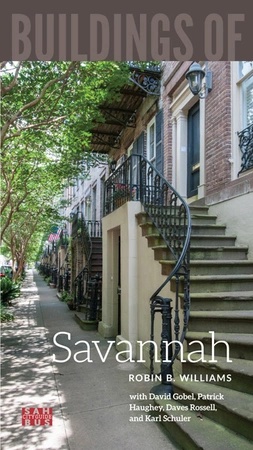
The oldest surviving institutional building in Savannah was home to the first hospital in Georgia. Tracing its roots back to 1804 as a seamen’s hospital, which became the Savannah Poor House and Hospital in 1808, Savannah Hospital in 1872, and finally Candler Hospital in 1930, this is one of the oldest such institutions in the country, and moved to this site on the southern edge of the city common in 1818, nearly half a mile south of the city at the time. The original building received an Italianate makeover in 1876–1877, which included the cast-iron two-story portico, ornate lintels, quoining, and crowning cupola. Grant also adapted the interior to implement what were possibly the first American examples of Nightingale wards, a new approach to hospital practice and ward design based on principles developed by Florence Nightingale during the Crimean War (1853–1856) and published in her influential book Notes on Hospitals (1863). He raised floor heights to accommodate the prescribed sixteen- to seventeen-foot-tall ceilings and enlarged window openings to maximize the flow of fresh air and natural light. The hospital boasted three such wards, each a large open room bisected by two parallel rows of decorative load-bearing cast-iron columns, in the east wing of the second floor and in both wings of the third floor. Candler Hospital vacated the building in 1980 for its current location in midtown. After sitting vacant for over a decade, the building was acquired in 2012 by the Savannah Law School, whose restoration (conducted by J. T. Turner Construction) included demolishing a 1968 windowless concrete addition that had blocked Huntingdon Street and obliterated the eastern bay of the portico. The Candler Oak on the northwest corner of the site is at least 250 years old and may predate Savannah itself. The Savannah Tree Foundation was organized in 1982 to save the venerable but ailing oak, which in 1984 became the first individual tree in the nation to receive a protective conservation easement.

